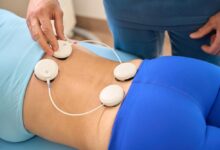What’s Involved in the Meniscectomy Recovery Process?

A meniscectomy is a surgical procedure performed to remove part or all of a damaged meniscus in the knee. Doctors often recommend this procedure for meniscal tears that limit mobility and cause pain. Recovering from a meniscectomy typically involves a gradual return to physical activity through carefully guided steps. By understanding the phases of recovery, individuals can better anticipate the progression toward regaining knee function.
Healing Process After Surgery
The early phase of meniscectomy recovery focuses on postoperative care and minimizing discomfort. Patients are usually advised to rest the knee, elevate the leg, and apply ice to reduce any swelling that may develop after surgery. Medications prescribed by the healthcare provider may be used to manage pain during this period. Doctors often provide instructions regarding bandage changes and keeping the surgical site clean to reduce the likelihood of infection. Avoiding activities that put undue pressure on the joint is emphasized to prevent additional strain on the knee. Crutches or knee braces may be recommended depending on the extent of the procedure to support mobility and protect the knee while it heals.
Reintroducing Movement and Therapy
After the initial resting period, the focus shifts to reintroducing movement through physical therapy. Physical therapists collaborate with patients to design personalized rehabilitation plans that may include gentle exercises to improve range of motion and build strength. Rehabilitative exercises gradually become more demanding as the knee heals and can involve stretching, light resistance, and balance training.
During this phase, patients regularly meet with their physical therapist to monitor progress. The therapist can adjust the recovery plan as needed. Consistent communication with the therapist allows any concerns or setbacks to be addressed promptly. Following the prescribed exercises improves the chances of regaining knee function without causing discomfort or complications.
Progressing to Everyday Activities
Most individuals gradually return to normal activities as their strength and mobility improve. Many start light daily activities, like walking, as soon as they feel comfortable. Physically demanding tasks, such as high-impact sports or repetitive squatting and bending, usually require more time.
During this stage, patients might engage in more dynamic physical therapy exercises that mimic real-life movements. A healthcare provider often conducts evaluations to determine when it is appropriate to fully return to work, exercise, or other strenuous activities. Keeping open communication with your care team is pivotal to pacing this process appropriately.
Monitoring Recovery and Outlook
Recovery from a meniscectomy continues beyond the reintroduction of everyday activities. Consistently performing strengthening exercises can support the knee and promote long-term stability. Some patients may benefit from follow-ups with their orthopedic specialist to discuss progress and address any lingering concerns. Focusing on knee health over time can contribute to staying active and preserving joint function longer.
Supporting Your Meniscectomy Recovery
The meniscectomy recovery process restores knee function step by step through rest, physical therapy, and controlled movement. You can regain mobility and strength by staying proactive and working closely with healthcare professionals. Discussing any concerns with your care team allows for personalized guidance to align your recovery pathway with your physical goals.





